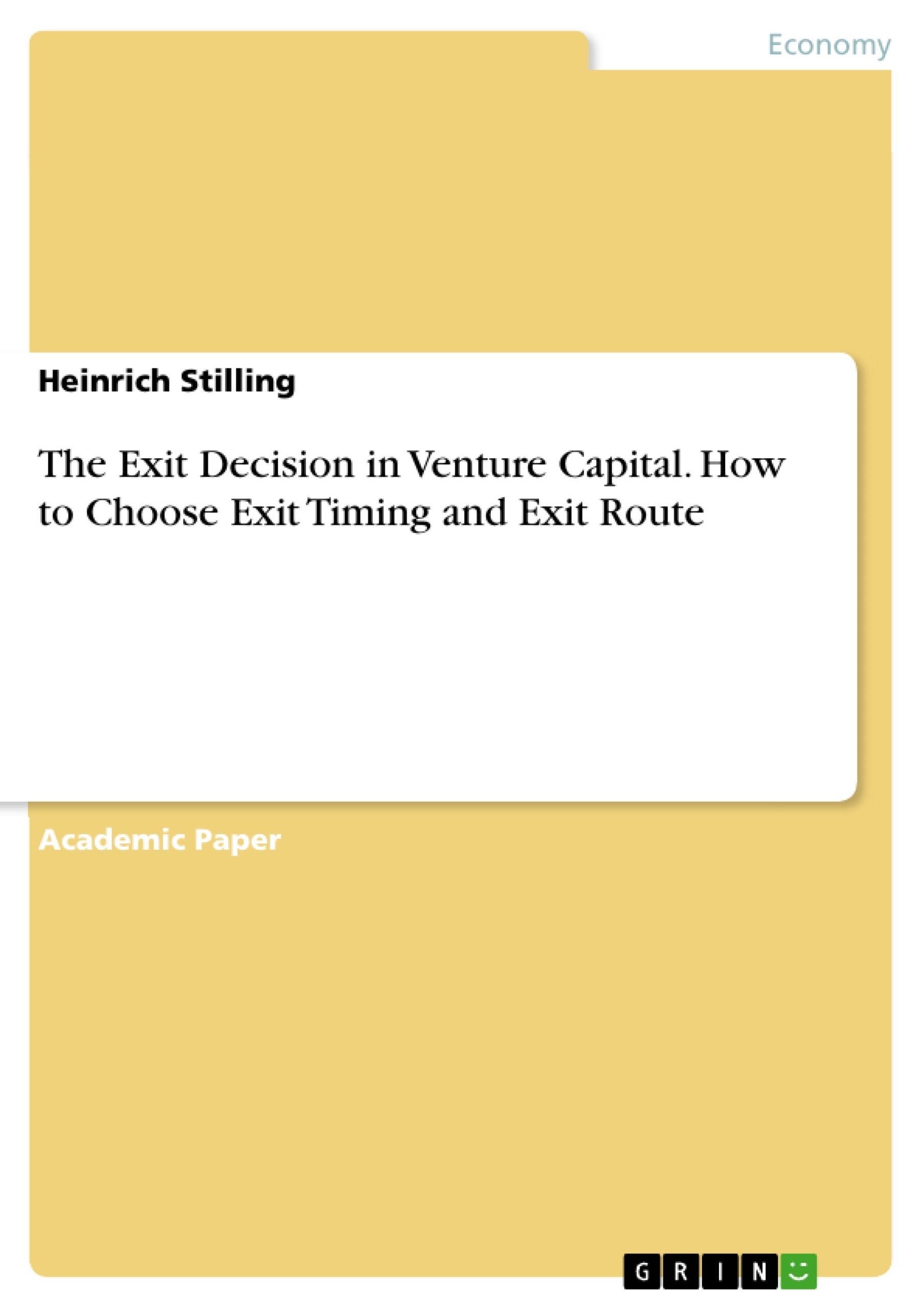The focus of this paper lies on answering the questions, what factors should be considered to successfully exist a venture with regard to exit timing and routing and how these strategic choices are interrelated.
The divestment process plays a critical role in the Venture Capital (VC) business model. Typically, a VC invested venture is not able to pay dividends prior to its exit as the business has not fully matured yet. Therefore, a Venture Capital Firm (VCF) generates virtually all of its income by realizing capital gains at the time of the venture’s exit. This indicates that a VCF heavily depends on a successful divestment transaction - in most cases, a poor exit execution leads to an inferior return on investment which in turn can ruin the VCF’s overall performance. A VCF therefore plans its exits carefully and evaluates its strategic choices. In this context, the two most important exit decision variables considered by a VCF are the choice of exit route and the choice of exit timing. By choosing the right exit route and pursuing good exit timing, a VCF can significantly increase its proceeds for a given venture. The primary focus of this paper lies on answering these aforementioned questions by drawing together the empirical research on these two dominant strategic exit choices.
Table of Contents
I. List of Figures
II. List of Abbreviations
1. Introduction
2. The Choice of Exit Route
2.1. Exit Route Alternatives
2.2. Factors that influence the Choice of Exit Route
2.2.1. ET vs. VCF – The ET’s Preferences
2.2.2. VCF vs. ET
2.2.2.1. The VCF’s Cash Preference
2.2.2.2. Fund Termination
2.2.2.3. VCF’s Reputational Incentives
2.2.3. VCF vs. Acquirer
2.2.3.1. Ability of new Owners to resolve IA and value the Venture correctly
2.2.3.2. Degree of Innovation
2.2.3.3. Ability of new Owners to monitor and discipline the ET
2.2.3.4. Development Stage of Venture at Exit
2.2.4. Additional Factors
2.2.4.1. Venture Quality
2.2.4.2. High-Technology Ventures
2.2.4.3. Transaction Synergies
2.2.4.4. Transaction Costs
2.3. Is there a Pecking Order of Exit Routes?
3. The Choice of Exit Timing
3.1. Efficient VC Investment Duration Framework
3.2. Factors that influence Exit Timing in the Real World
3.2.1. VCF vs. Acquirer
3.2.1.1. Stage of Development at first Investment
3.2.1.2. Venture Quality
3.2.1.3. High-Technology Ventures
3.2.2. VCF vs. ET
3.2.2.1. Funds available to the VCF
3.2.2.2. Pre-Planned Exits, Unsolicited Offers, and VC Fund Termination
4. Empirical Evidence for the Relationship between Exit Timing and Exit Route
4.1. Rank Order of Exit Routes with regard to Investment Duration
4.2. IPO and Timing
4.2.1. The Grandstanding Theory
4.2.2. Cyclicality of Valuation in IPO Markets
4.2.3. Market-Timing vs. Market Conditions
4.3. Trade Sale and Timing
5. Conclusion
III. Appendix
IV. References
- Quote paper
- Heinrich Stilling (Author), 2014, The Exit Decision in Venture Capital. How to Choose Exit Timing and Exit Route, Munich, GRIN Verlag, https://www.grin.com/document/500507
-

-

-

-
Upload your own papers! Earn money and win an iPhone X. -

-
Upload your own papers! Earn money and win an iPhone X. -

-
Upload your own papers! Earn money and win an iPhone X. -

-
Upload your own papers! Earn money and win an iPhone X. -

-
Upload your own papers! Earn money and win an iPhone X. -

-
Upload your own papers! Earn money and win an iPhone X. -

-
Upload your own papers! Earn money and win an iPhone X. -

-
Upload your own papers! Earn money and win an iPhone X. -

-
Upload your own papers! Earn money and win an iPhone X.

